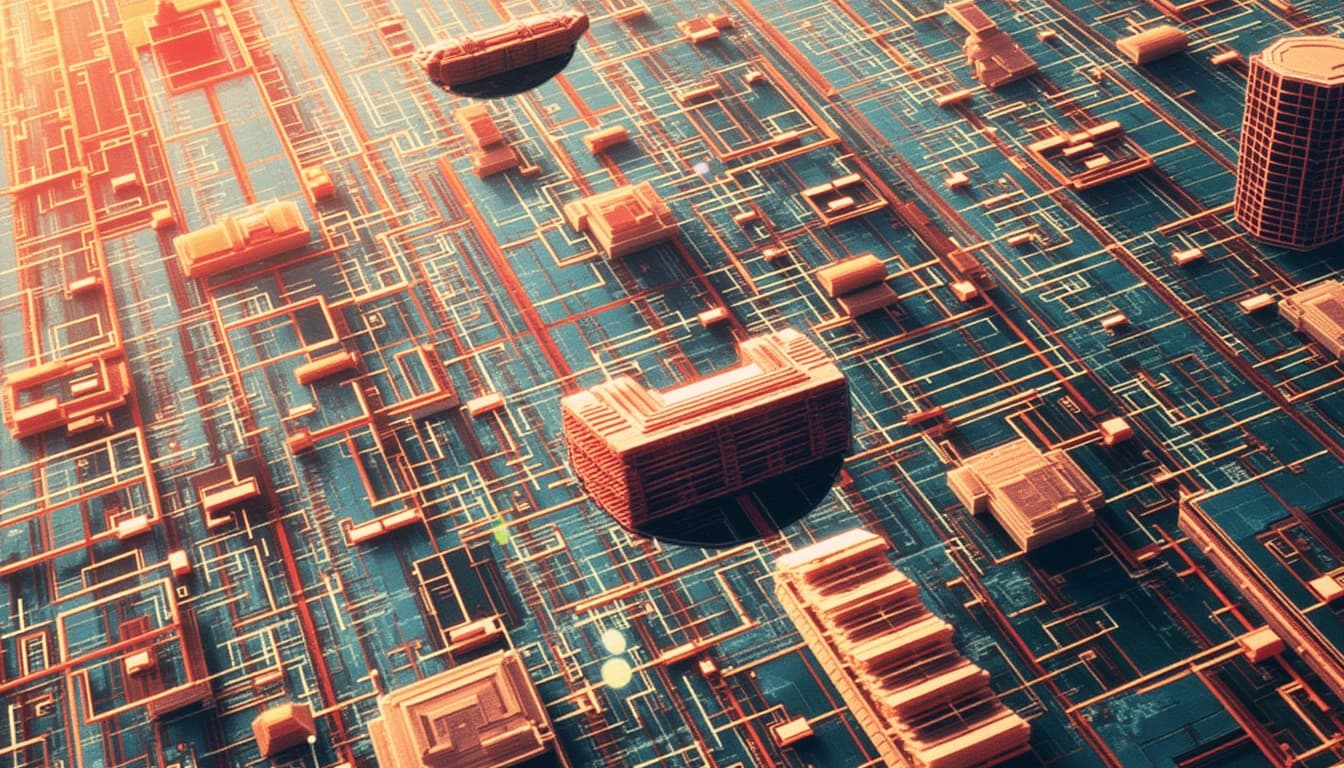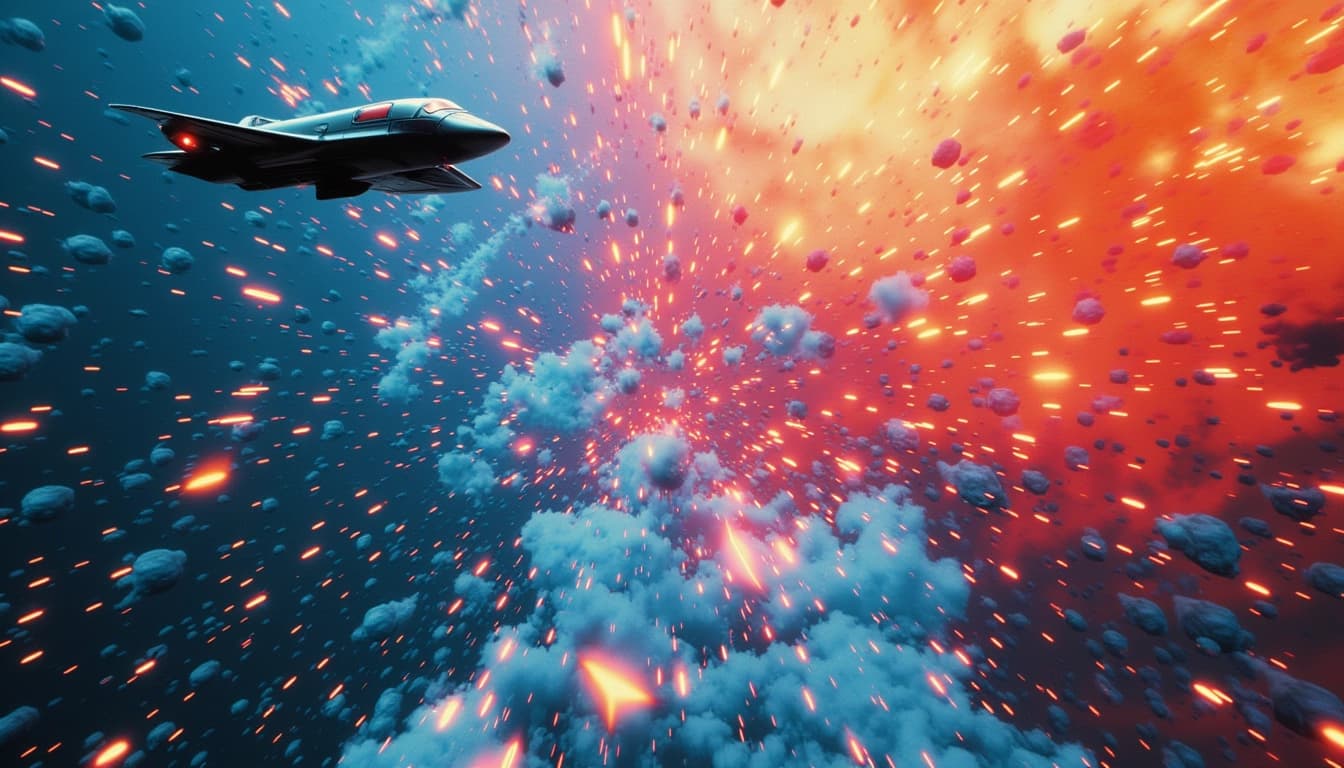
Tile-morph: Transforming Abstract Art into Motion
By John Doe 5 min
Tile-morph: Transforming Abstract Art into Motion
Tile-morph is an AI model developed by Replicate user andreasjansson, designed to create tileable animations with seamless transitions. It takes two text prompts—one starting and one ending—that describe abstract art and generates a sequence of images that morph from the first to the second. Each image in this sequence is tileable, meaning it can be repeated in a grid without visible seams, achieved through a technique called circular padding. This ensures the edges match, creating a seamless pattern.
How Does Tile-morph Work?
The motion comes from the animation, where the abstract art described by the prompts gradually changes. Tile-morph uses CLIP embedding space interpolation to create intermediate prompts, blending the starting and ending descriptions. It then generates key frames using Stable Diffusion for these prompts and adds interpolated frames in the latent space for smooth transitions. This process results in a dynamic, moving representation of abstract art, perfect for applications like dynamic backgrounds or art installations.
Unexpected Detail: Looping and Tiling Focus
Unlike other animation models, tile-morph uniquely focuses on creating looping, tileable animations, making it ideal for continuous, seamless visual effects, which might surprise users expecting standard video outputs.
Key Points
- Tile-morph, an AI model, likely transforms abstract art into motion by creating seamless, tileable animations from text prompts describing the art.
- It seems to use CLIP and latent space interpolation to smoothly transition between starting and ending abstract art descriptions, with each frame being tileable for seamless patterns.
- Research suggests this process involves generating key frames with Stable Diffusion and adding interpolated frames for smooth motion, focusing on looping animations unique to tile-morph.
Tile-morph represents a fascinating intersection of artificial intelligence, art, and motion, offering a novel way to animate abstract art through seamless, tileable animations. This survey note delves into the technical underpinnings, practical applications, and unique features of tile-morph, providing a comprehensive overview based on available information as of March 30, 2025.
Background and Definition
Tile-morph is an AI model hosted on Replicate, created by user andreasjansson, specifically designed to generate tileable animations with seamless transitions between different text prompts. These prompts describe abstract art, enabling the model to transform static descriptions into dynamic, moving visuals. The model's focus on tileability—ensuring each frame can be repeated in a grid without visible seams—sets it apart from other text-to-image animation tools like MagicAnimate and AnimateDiff, which do not prioritize looping, tileable outputs.
Technical Mechanism
The transformation of abstract art into motion by tile-morph involves several key steps, leveraging advanced AI techniques. Users provide a starting prompt and an ending prompt, both describing abstract art. For example, one might describe 'swirling colors in a chaotic pattern' and another 'geometric shapes in soft gradients.' These prompts are processed using CLIP (Contrastive Language-Image Pre-Training), a model that maps text and images to a common embedding space.
CLIP Embedding Space Interpolation
Tile-morph interpolates between the CLIP embeddings of the starting and ending prompts to create a series of intermediate prompts. The number of these intermediate steps is controlled by the `num_animation_frames` parameter, which determines how many key frames will be generated using full Stable Diffusion inferences. This interpolation ensures a smooth transition between the two abstract art descriptions, creating a coherent animation.
Tile-morph is a specialized tool designed to create looping, tileable animations using Stable Diffusion. It generates abstract art that seamlessly transitions between different styles or themes, making it ideal for backgrounds, textures, and other applications requiring seamless patterns. The tool leverages advanced techniques like latent space interpolation and circular padding to ensure smooth transitions and tileability.
How Tile-Morph Works
Tile-morph starts by taking two text prompts as input, representing the beginning and end of the animation. It then generates intermediate prompts to create a smooth transition between these two points. Each intermediate prompt is used to generate a key frame through Stable Diffusion inference. The tool ensures each frame is tileable by using a circular padding trick, which wraps pixels around the edges to create seamless patterns.
Latent Space Interpolation
Between each pair of key frames, tile-morph creates additional frames using latent space interpolation. This process involves interpolating in the latent space of Stable Diffusion, where images are represented as vectors. Each interpolation step runs a VAE inference, which is faster than a full Stable Diffusion process, as it only decodes the interpolated latent vectors into images. This ensures smooth transitions between key frames.
Final Animation
The total number of frames in the animation is determined by the number of key frames and interpolation steps. For example, with 2 key frames and 10 interpolation steps, the animation would have 12 frames. The result is a looping, tileable animation where each frame can be tiled seamlessly, and the motion shows the abstract art transforming from the starting to the ending prompt.
Unique Features
Tile-morph's focus on creating looping, tileable animations sets it apart from other tools. Its use of circular padding and latent space interpolation ensures high-quality, seamless transitions. This makes it particularly useful for designers and artists looking to create dynamic backgrounds or textures without visible seams or abrupt changes.
Conclusion & Next Steps
Tile-morph offers a powerful way to create seamless, looping animations using Stable Diffusion. Its combination of intermediate prompts, latent space interpolation, and circular padding results in smooth, tileable transitions. Future improvements could include more advanced interpolation techniques or additional customization options for the animation process.
- Generates looping, tileable animations
- Uses Stable Diffusion for key frames
- Employs latent space interpolation for smooth transitions
- Ensures tileability with circular padding
Tile-morph is an innovative AI model that transforms abstract art into seamless, looping animations. By leveraging Stable Diffusion and ControlNet, it creates infinite, tileable motion patterns from static images. This unique approach allows artists and designers to bring their abstract creations to life in ways that were previously difficult or impossible.
Key Features and Technical Innovation
Tile-morph stands out due to its focus on tileability and seamless looping, which sets it apart from other animation models like MagicAnimate and AnimateDiff. The model uses a combination of CLIP embedding space and latent space interpolation to ensure smooth transitions between frames. This dual approach enables both semantic evolution of the artwork and visual coherence throughout the animation.
CLIP and Latent Space Interpolation
The CLIP embedding space handles the semantic transition of prompts, guiding the abstract art's transformation over time. Meanwhile, latent space interpolation fine-tunes the visual smoothness between frames, ensuring the animation flows naturally. This technical combination is what allows tile-morph to achieve both artistic and technical excellence in its outputs.
Practical Applications
Tile-morph's capabilities open up a range of creative and technical applications. Its ability to generate infinite, seamless loops makes it ideal for dynamic backgrounds in digital interfaces or immersive environments in art installations. The model's outputs can also be used in video production for abstract transitions or visual effects.

Technical Considerations and Limitations
While tile-morph offers groundbreaking possibilities, it is computationally intensive, especially for high-resolution animations. Users should also be aware that the quality of the output depends heavily on the input image and prompts. Despite these limitations, the model represents a significant step forward in AI-driven creative tools.
Conclusion and Future Directions
Tile-morph demonstrates the potential of AI to expand the boundaries of abstract art and motion design. As the technology evolves, we can expect even more sophisticated tools for artists and designers. The model's current capabilities already provide a glimpse into a future where static art can dynamically adapt and transform.

- Seamless, tileable animations
- Dual interpolation for smooth transitions
- Applications in design and video production
- Computational intensity as a limitation
Tile-morph is a specialized AI model designed to create seamless, tileable animations from abstract art based on text prompts. It leverages Stable Diffusion and CLIP to generate key frames that are then interpolated for smooth transitions. Each frame in the animation is tileable, making it ideal for dynamic backgrounds and visual effects.
How Tile-morph Works
The model begins by generating key frames using Stable Diffusion, guided by CLIP to ensure the frames align with the text prompt. These key frames are then interpolated either through CLIP-guided interpolation or latent space interpolation. The circular padding technique ensures each frame remains tileable, allowing for seamless looping animations.
Key Frame Generation
Key frames are created using Stable Diffusion, which interprets the text prompt to produce abstract art. These frames serve as the foundation for the animation, capturing the essence of the prompt in visual form. The number of key frames can be adjusted to balance detail and processing time.
Interpolation Techniques
Tile-morph offers two interpolation methods: CLIP-guided and latent space. CLIP-guided interpolation uses the CLIP model to create smooth transitions between key frames, while latent space interpolation is faster but may produce less varied results. Users can choose the method that best suits their needs.

Applications of Tile-morph
Tile-morph is perfect for creating dynamic backgrounds, visual effects, and art installations. Its ability to produce seamless, looping animations makes it a valuable tool for designers and artists looking to add motion to their work without visible seams or interruptions.
Conclusion & Next Steps
Tile-morph represents a significant advancement in the creation of tileable animations, offering unique capabilities not found in other models. Its focus on seamless, looping animations makes it ideal for a variety of creative projects. Future developments could include enhanced interpolation techniques and broader compatibility with other AI tools.
- Explore different text prompts to see the range of animations Tile-morph can produce
- Experiment with the number of key frames and interpolation steps to find the right balance
- Share your creations and see how others are using Tile-morph in their projects
The tile-morph AI model, developed by Andreas Jansson, represents a significant advancement in the field of AI-driven art. This model specializes in transforming images into intricate tile-based designs, offering a unique blend of creativity and technology. Artists and designers can leverage this tool to create visually stunning patterns and mosaics with minimal effort.
Technical Specifications of tile-morph
The tile-morph model is built on advanced machine learning algorithms that analyze and reinterpret input images into tile-like structures. It supports various input formats and allows for customization of tile size, color schemes, and pattern complexity. The model is hosted on Replicate, making it accessible to users without the need for extensive computational resources.
Key Features
One of the standout features of tile-morph is its ability to maintain the essence of the original image while transforming it into a tile-based artwork. The model also offers real-time previews, enabling users to tweak parameters and see immediate results. Additionally, it supports batch processing, allowing for the transformation of multiple images simultaneously.
Applications in Art and Design

The tile-morph model has found applications in various creative fields, including digital art, interior design, and fashion. Artists use it to generate unique patterns for textiles, wallpapers, and digital illustrations. Designers appreciate its ability to quickly produce complex designs that would otherwise require hours of manual work.
Future Developments
Andreas Jansson has hinted at future updates that will expand the model's capabilities, including support for 3D tile transformations and integration with augmented reality platforms. These advancements could open up new possibilities for interactive art and immersive design experiences.
Conclusion & Next Steps
The tile-morph AI model is a powerful tool for artists and designers looking to explore new creative avenues. Its combination of ease of use and advanced features makes it a valuable addition to the AI art toolkit. As the model continues to evolve, it promises to push the boundaries of what's possible in digital art and design.

- Explore the tile-morph model on Replicate
- Experiment with different input images and parameters
- Share your creations with the AI art community